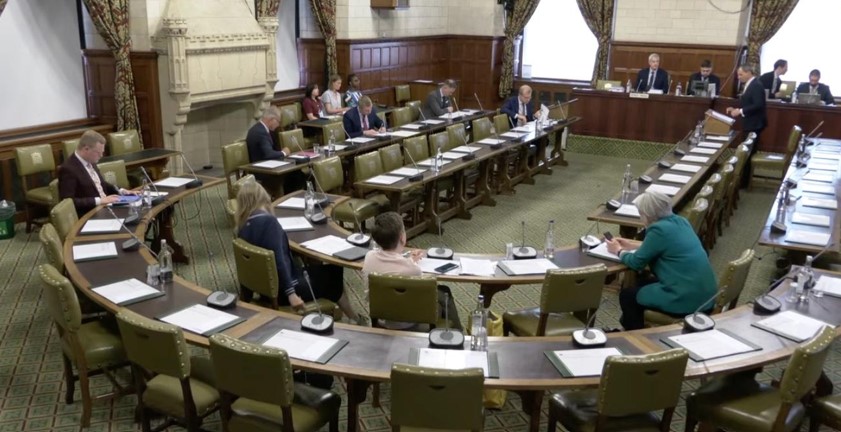This is guest post by Megan Pitz.
As another sweltering summer day over 100 degrees came to a close in the Washington, D.C. region, citizens of nearby Alexandria, Virginia witnessed the closure of the Potomac River Generating Station (PRGS) coal-fired power plant also known as the ‘Mirant Plant.’
The closure was expected by the community – as much as anything can be that you fight for – but it didn’t happen overnight. It began in 2003 with citizen-activists Elizabeth Chimento and Poul Hertzel’s quest to learn the source of black soot-like residue coating the windowsills of homes and businesses in Alexandria’s Old Town neighborhood.
Chimento and Hertzel’s first step involved pressuring city officials to clean up the power plant. Efforts in this direction continued for several years until a Mirant Community Monitoring Group (MCMG) of citizen activists, civic groups, and City officials formed and began working alongside environmental groups to hold the plant’s owner and environmental agencies accountable for the power plant’s pollution.
In 2008, after nearly six years, this led to a legal agreement between the City of Alexandria and plant owners that, along with recommendations from Virginia’s Air Pollution Control Board, provided some of the pollution controls these citizens had been asking for, especially for the main public health concern of particulate matter.
The decision to retire the plant arrived later but would never have happened without the active engagement of a dedicated community.
The Potomac River plant is one of the largest single sources of ozone-forming pollutants within the DC metro area of nonattainment, an area that does not meet federal clean air standards and includes Alexandria.
Citizens and the City had for years pressured the Virginia Department of Environmental Quality (DEQ) to determine whether its pollution posed a serious health threat to residents living in its midst but it was not until 2003, when ozone-forming NOx spewing from its stacks exceeded Clean Air Act (CAA) standards, that the VA DEQ confirmed the health impacts and gave the plant’s owner (then Mirant) an ultimatum to clean up or shut down.
Mirant responded by shutting the plant down in the hope of proving it was needed for a reliable supply of local electricity. This only served to galvanize the campaign by providing the DC Public Service Commission an opportunity to file a petition.
The petition enabled the Secretary of Energy to look at the plant’s generation and, while ordering it to turn the plant back on, also order the utility to add pollution controls and build transmission lines that would make the plant unnecessary for reliability.
Environmental attorney John Britton used the Order to write a letter highlighting the plant’s history of exceeding air quality standards and the consequent threat to the health of residents. Britton’s letter also noted a tradeoff that became a theme of campaign messaging: while Alexandria received no power from the plant, its residents bore its health and environmental impacts.
The MCMG continually countered Mirant’s untruthful publicity by distributing their own information while citizens wrote officials personal stories about their health problems attributable to the plant. Along with environmental groups, the MCMG organized marches and meetings, posted signs and handed out fact sheets about the plant, and actively participated in public hearings.
Greater Washington Interfaith Power and Light (GWIPL)’s Director Joelle Novey worked to mobilize congregations of many faiths in support of closing the plant.
A petition drop at a meeting of hard-to-reach audience GenOn shareholders created enough pressure to get the attention of key decision makers at GenOn. This resulted in a private meeting with their Executive VP, where citizen activists Dr. Ana Prados and Ernie Lehmann conveyed residents’ determination to retire the plant.
Letters-to-the-Editor in local papers connecting the plant site to spills and events raising awareness about effects of the plant’s mercury were also effective in garnering additional public support to close the plant.
However, even successful attention-grabbing tactics can be ignored when not coupled with a credible legal threat. The Potomac River plant operates in violation of the Clean Water Act due to its failure to install cooling towers. Addressing such violations in a 26-page letter, lawyers Joshua Stebbins and Zachary Fabish pressured GenOn by making key officials at EPA and NOAA aware and requesting they be remedied in the plant’s upcoming permit renewal.
Impact of the letter was magnified with sign-on of the entire coalition of groups formed for the ‘GenOff’ campaign, including Greenpeace USA, the Sierra Club, GWILP, and the Chesapeake Climate Action Network.
The City’s commitment to the 2008 legal agreement was a barrier to close the plant, but this quickly changed.
In the summer of 2011, the Environmental Protection Agency (EPA) issued a rule to limit sulfur dioxide (SO2) pollution. The SO2 Rule set a one-hour standard for SO2 emissions at 75 parts per billion. With the new rule, the plant’s emission levels of SO2 across VA, DC, and MD also became, by law, “unhealthy.”
But the critical action in the story of the shutdown came from the City of Alexandria itself. The City’s commitment to the agreement it had signed with the plant owner also gave it some leverage. As a party on the other end of this binding agreement it was positioned to make GenOn an offer no one else could: if GenOn agreed to retire the plant, it could take the remaining funds set aside by the Agreement, some $30 million, and walk.
Faced with the expense of cooling towers and SO2 controls, ongoing costs of less effective controls, political pressure as well as renewed pressure from residents and environmental groups backing the Sierra Club attorneys’ legal threat, the City’s offer turned out to be one GenOn could not refuse.
When on October 1st, 2012, the Potomac River Generating Station emits the last of its smog-causing pollutants, many will truly breathe a sigh of relief.
Megan Pitz was a Fellow with Greenpeace USA‘s Coal Campaign, where she represented the organization in the coalition that pressured the Potomac River coal plant to retire.
Image credit: Parys Ryszard | Shutterstock
Subscribe to our newsletter
Stay up to date with DeSmog news and alerts







